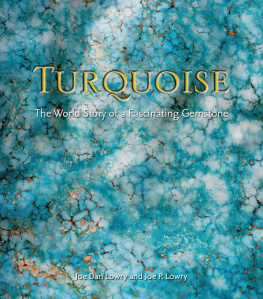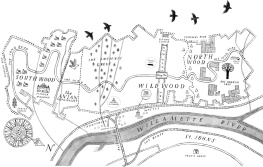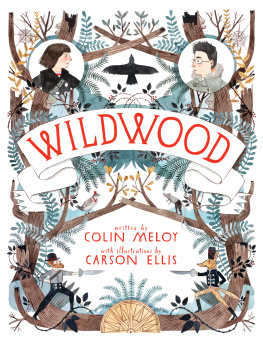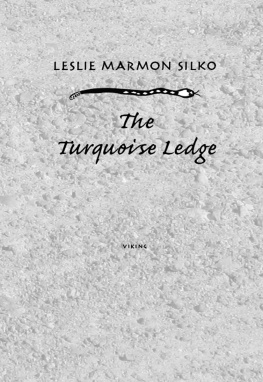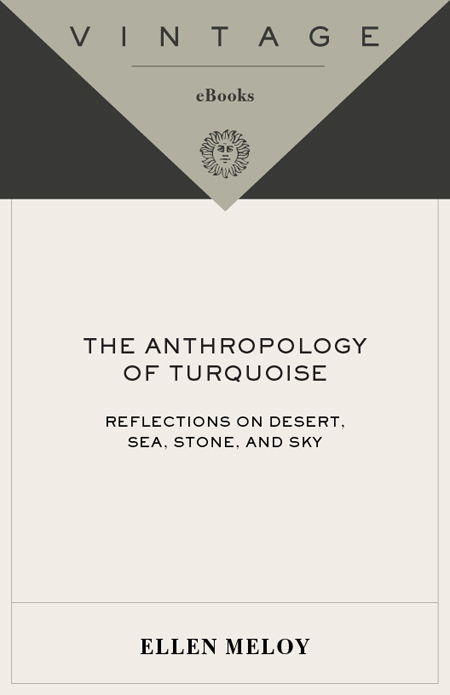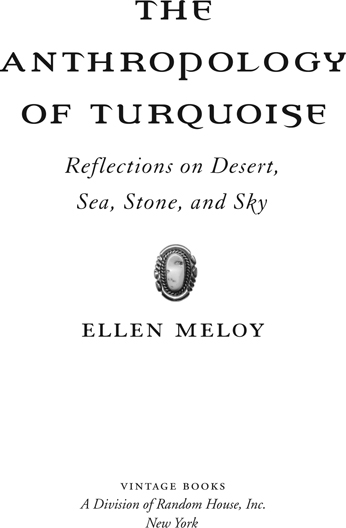I have always kept ducks, he said, even as a child, and the colours of the plumage, in particular the dark green and snow white, seemed to me the only possible answers to the questions that are on my mind.
W. G. S EBALD
The Rings of Saturn
The Deeds and Sufferings of Light
Words begin as description. They are prismatic, vehicles of hidden, deeper shades of thought. You can hold them up at different angles until the light bursts through in an unexpected color.
S USAN B RIND M ORROW
The Names of Things
Winter on the Colorado Plateau has not been arduous, only a thin cold without storms, a lucid map of stillness. Caught in the abrupt instant of its rising, our faces take the tangerine sun, our backs dissolve to silhouette in the brilliant dazzle of its incandescent beam. The nights come less as a smooth pause than as a steep, enduring purity of eye-blind dark. The mesas creak and strain in the frigid air, audible only if I lay my ear to them. The colors in their flanksterra cotta, blood-red, salmon, vermilion bear the temperament of iron.
On these days of winter I climb to the top of a sky-raking spine of sandstone and sit beside a juniper tree.
The ridge runs from a crumpled mountain range in southern Utah to the Arizona desert, jumping a river along its way. It is an elongated, asymmetrical reef of Mesozoic sandstone with a face and a flank, two sides so different you think that you are somewhere else when you are in the same place. The face rises brick-red from a broad wash, nearly vertical but for a skirt of boulders along its talus. The flank is the crazy side: an abruptly sloped flexure of ancient rock beds tilted upward into a jagged crest. Most of the massive slab is Navajo Sandstone, the Colorado Plateau's famously voluptuous field of windblown sand dunes now consolidated into nearly pure quartz crystals. Against the steel-blue sky of a summer monsoon, the ridge bleaches to white. Moonlight blues it, and bright sun turns it pale cream or, if you are making love atop it, blush pink.
From afar the stone reef appears continuous, exfoliating here and there into flakes the size of small European countries. Look more closely and you will see that box canyons cut across its length, ending in deep alcoves. Smaller fissures run in unexpected directions, and narrow valleys hang high toward the crest, where faults have filled with sandy soil held stable by the living organism of a black cryptobiotic crust. Yucca, single-leaf ash, Mormon tea, black-brush, and other shrubs find purchase in pockets and cracks. However, most of the ridge is bare-boned slickrock. When you hike it in midsummer, you are lightning bait. I climb it with my paints and crayons, breath hard, heart pounding, up the slope to the isolated juniper tree. It is the far edge of winter, no longer bone-cold, not yet spring's exhalation of green. The surface of the slickrock is neither icy nor warm, just touchable.
On my first winter days on the ridge, I bring watercolors and the hope that the hand of my brother, an artist who died outdoors with his paint box near him, will guide the tip of my brush across the paper, rendering effortlessly exquisite art on paper and a Zen-like serenity in my heart. Then I change my expectations and carry a box of crayons up the ridge to the juniper tree. I blunt their tips with irresponsible yellow and the demands of green. I rub bold, wild strokes. I shuck the Zen crap and try to obey Ezra Pound's advice to artists: Make the world strange.
Finger paints will be next in the lineup of media and with their slurpy nonchalance a release from the weight of a cerebral life what remains of it, that is, for in recent years I have suffered what neurologists call a reduction in mental acuity. So far, it feels like a kind of carbonated brain fog, with perforations in memory that threaten to become air ducts. Because there is the possibility of an abrupt slide into chronic befuddlement, I thought it might be useful to acquire some basic motor and tactile skills, like pushing around cool, gooey paint in mindless, repetitive motions, as preparation for that freshly vacated space, that airy void between the ears.
On watercolor days I carry a field kit that belonged to my brother, a faded olive-green canvas bag that he slung over his shoulder when he went out to sketch and paint on the northern California coast where he lived. Over the years since he died, I have kept its contents intact: a tin of paints and camel-hair brushes, colored pencils bunched together like chopsticks and bound with a rubber band. A prism. A miniature pencil sharpener made to look like a shark's mouth. A sumi inkstone in a slender box marked by a column of Japanese characters and a vial once filled with water from a stream in the Sierra Nevada, where he and I often joined company in the summers. A Swiss Army knife and three orange juggling balls. From wherever he isa ghost in his favorite denim jacket, a vapor hovering above me cross-legged on a cloud like a cotton puff, a mere slip of memory and thoughtI want him to teach me to juggle, but mostly I want him to teach me to paint, to inform the movement of my brush across the rough blank of paper. I end up thinking more about him than about art, which is, after all, what I am supposed to do.
On crayon days I try to explode my hand, my eye, my past. For a number of years, in a previous life, I made a living in technical illustration, churning out laboriously stippled pen-and-ink drawings of bones, feathers, fish, and wolves; the orchid's calyx and the ear's canals and vestibules, which are the organs of balance; profiles of geological strata; maps of rivers and mountains; maps of islands known and islands imagined; diagrams of subatomic structure; meticulous renderings of leaves and seedpods, pebbles and aetites, stones with small clay cores that emerge when you break open their ironstone shells. By drawing these things I learned that sand dunes and the bends of rivers migrate and that stones could give birth. For relief from detail I drew cartoons, but they were not relief enough, so I painted barns. The idea of paints now, and of barns back then, is to leave behind those black-on-white, uptight stabs of a pinpoint pen and open my hand to a looser muscle of expression. I hope to make pictures like I walk in the desertunder a spell, an instinct of motion, a kind of knowing that is essentially indirect and sideways.


